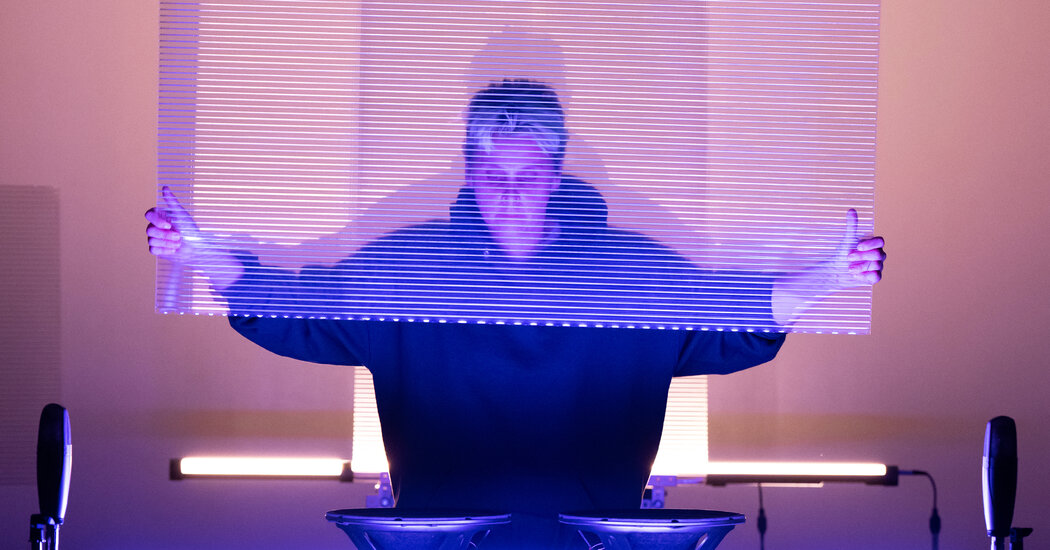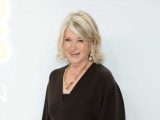
Long Play Rises to the Top of New York Classical Music Festivals
05/08/2023Long Play has been around only since last year, but it is already the most important classical music festival in New York City.
And, based on the 15 concerts I attended during its second edition, which unfolded and overlapped in spaces around Brooklyn from Friday through Sunday, this festival by the Bang on a Can collective could even stand to get a little bigger.
Capacity crowds amassed at Pioneer Works to hear Meredith Monk’s ensemble collaborate with the Bang on a Can All-Stars; at Roulette to hear the Philip Glass Ensemble; at the Mark Morris Dance Center to hear a new repertory group investigate music from the early 1990s by the Pulitzer Prize-winning composer Henry Threadgill. These in-demand sets couldn’t fit everyone who wanted to hear them, but with two or three other events always close by, nobody was truly left out in the cold.
Before Long Play, Bang on a Can had spent three decades presenting one-day marathon concerts. But the scope of this organization’s ambition has reached a new level, and it is an untrammeled joy to experience.
For example, on Saturday afternoon at Public Records, the JACK Quartet performed a version of “Prisma Interius VII” by the young composer Catherine Lamb. Previously conceived for violin and synthesizer alone, the piece was recast here for the dreamy, collaborative ability of the JACK players to hold precise microtonal harmonies. Staggered entries of droning pitches steadily created complexly sour motifs that tended to plunge downward. Where Lamb switches up her patterns with melodic ascents, the players savored the opportunity to make this often static music sing out.
From there, you could race over to the big crowd forming at Roulette for Glass’s music, or stay put to enjoy Xenakis’s “Tetras” as well as “rag′sma,” by the JACK violinist Chris Otto. Although I’ve enjoyed those pieces on recordings, I felt a need to check in on the Glass Ensemble. The composer was present in the audience but no longer performs with this band, so this was an opportunity to hear the group’s veteran music director, Michael Riesman, lead younger players like the saxophonist Sam Sadigursky.
When interpreting the composer’s landmark “Glassworks” album from 1982, the ensemble brought a bass-heavy thump that reflected real love for the “Walkman” mix — created in its time “for your personal cassette player,” a way for Glass to put his music in a useful dialogue with contemporary pop styles (a lesson that the Bang on a Can crew took to heart in their own careers).
Next, at the BRIC House Ballroom, I heard a performance by the saxophonist Shabaka Hutchings, who is known for his fusion of avant-garde jazz and London club music, but here stuck to flutes, as part of a serene South Asian-influenced quartet led by the vocalist (and sometime bassist) Ganavya. Call it another sign of an aesthetically confident festival: Here, artists are not required to stay in expected lanes.
Early Saturday evening, Roulette hosted the symphonic, brawling, experimental, tuneful big-band music of David Sanford; slightly overlapping, in the BRIC lobby, was the Momenta Quartet’s presentation of Alvin Singleton’s string quartets. Sanford, one of my favorite living composers, conducted his own music, in which you can hear his taste for artists as wide-ranging as Helmut Lachenmann and Charles Mingus.
I stayed for Sanford’s entire set before watching the Momenta players handle the climactic, interlocking figures from Singleton’s third quartet with an acrobatic ease; after that, they brought Romantic feeling to the fourth. This varied sequence of music by two living Black composers, ecstatic on its own terms, also put the lie to claims that you’ll sometimes hear from bigger institutions that say they are retreating from “classical music” in an effort to appeal to new audiences.
When programmers at the Brooklyn Academy of Music or Lincoln Center say such things — fewer string quartets, like Momenta, more electric bass, as in Sanford’s band — you can understand the point, and maybe even agree with it in principle. But with the Long Play festival, Bang On a Can replies: “Why not both, and why not back to back?”
Also on Saturday night, I caught a performance at Public Records by the trio Thumbscrew, with Mary Halvorson on guitar, Michael Formanek on bass and Tomas Fujiwara on drums. In addition to Thumbscrew’s own vibrant compositions, the trio also let loose a wild take on Mingus’s “Orange Was the Color of Her Dress, Then Blue Silk.”
This kind of wide array was on offer all weekend. The next day, I traveled from a set of electronic music by the composer Ash Fure to a quartet performance led by the vibraphonist Patricia Brennan.
ANIMAL_LONGPLAY from Ash Fure on Vimeo.
Though visually arresting, an environment combining art installation and avant-house-music light show, Fure’s new concept — a kind of thumping club from hell — seemed starkly limited as musical matter compared with thrilling past chamber works on the album “Something to Hunt.” Half an hour later, at BAMcafé, Brennan’s quartet interpreted languid-then-convulsive pieces like “Space for Hour,” from her recent album “More Touch”; her electronically outfitted vibraphone playing belongs in a conversation with the Ash Fures of the world.
From there, I enjoyed the first 75 minutes of a radical yet sensitive take on Morton Feldman’s “Triadic Memories,” with Conrad Tao on piano and Tyshawn Sorey on percussion. This is originally a piano solo, yet Sorey’s skittering cymbal work was closely attuned to the score, his floor toms tuned to highlight the densest chordal moments in Tao’s interpretation of the notated material.
I would happily have stayed for the final minutes but needed to rush to hear a band playing the music of Threadgill’s Very Very Circus outfit. The guitarist Brandon Ross, the tuba player Marcus Rojas and the drummer Gene Lake were all veterans of that ensemble; here, they brought works like “Little Pocket Size Demons” to life in the company of younger players, including the guitarist Miles Okazaki.
Threadgill isn’t likely to play the Very Very Circus music himself again, but he was in the audience on Sunday to appreciate the birth of a new repertory band in his honor; he soaked up applause from his seat, just as Glass had.
The weekend was so rich, it hardly mattered that Sunday night’s planned closing set, by the Art Ensemble of Chicago, had to progress without the participation of the group’s sole remaining founder, the saxophonist Roscoe Mitchell, who tested positive for Covid-19 before the gig. Hutchings bravely stepped in on short notice, and the potent, anchoring work of the percussionist Famoudou Don Moye recalled some of his first recorded performances with the group, after he joined in the early 1970s. Hutchings didn’t try to sound like Mitchell, but instead gave listeners a taste of the brawny, insistent tenor sax sound that we hadn’t heard the previous day in his appearance with Ganavya.
Such is the strength of Long Play. When a veteran headliner has to drop out, there’s still something else to savor. And when a veteran like Meredith Monk does hit the stage — as she did for Friday night’s opening concert — she is apt to bring a new vigor to vintage works like her “Tokyo Cha Cha,” which she performed, complete with choreography, for nearly 20 grooving, ethereal minutes.
Pray that this festival continues, and that it expands. It should become a destination event; and if it does, it’s going to need some bigger rooms — or a bigger schedule — to serve a public that is already showing that it wants to hear all of this music.
Source: Read Full Article

